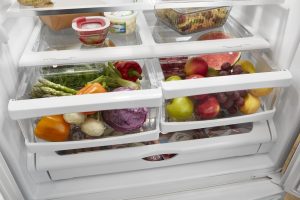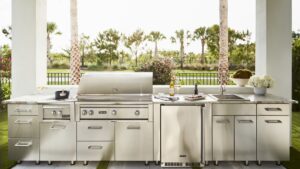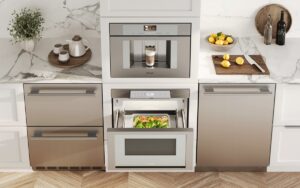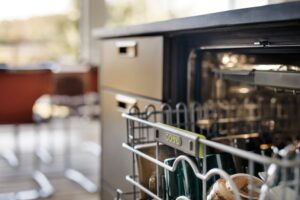How to Efficiently Store Food in the Refrigerator

Premature food spoilage can be avoided if the food is stored efficiently in the refrigerator. The basic techniques outlined in this article will help you to keep the food safe and healthier for longer.
Understanding the Refrigerator
Many people regard their refrigerator as a cold box to store their food. But, this is a complex device that controls the light, temperature and humidity at optimal levels for food storage. The refrigerator can be divided into different zones to preserve the nutrients of the food and to extend their lifespan. Improperly stored foods are still prone to premature spoiling in the refrigerator if contaminants are allowed to occur. Bacteria, mold growth and bad odors are a real risk if the refrigerator is operating above 40ºF and bad storage methods are used.
4 General Food Storage Tips
1. Don’t Keep the Refrigerator Overfilled
If the refrigerator is too full, the airflow is inhibited and this makes some areas of the appliance warmer than others. The refrigerator may need to work harder which leads to higher energy bills and an unexpected repair bill. Adopting a proactive approach to food storage can promote better airflow to keep the temperature uneven. Foods should not touch the sides or back of the refrigerator and a distance of ½” should be maintained between food items.
2. Regular Refrigerator Cleaning
Regular cleaning of spills is advisable, but a deeper clean every 3 months is highly recommended. All the trays and shelves should be removed and cleaned with hot soapy water. A diluted bleach solution is an effective way to kill any microorganisms that may be present. The best ration is a single tablespoon of bleach per gallon of clean water. Double-walled glass surfaces should not be soaked or the water can be trapped between the surfaces which can lead to mold growth.
3. Use a Food Thermometer
A food thermometer in the refrigerator can help you to monitor the temperatures. This can be an extra check if you’ve invested in a modern appliance with a digital temperature readout. The thermometer should be placed on the second shelf to get the most accurate reading from the center of the appliance. If the temperature rises, lower it or contact a technician if it cannot be corrected.
4. Create a Fresh Environment
Placing an open container of baking soda on the second shelf will make the interior of the appliance fresher. Write the date on the container and replace the baking soda every 3 months when you deep clean the interior.
The Refrigerator Compartments Explained
There are refrigerator compartments that are designed for the storage of certain food types as follows:
- The Main Compartment: This is the location where most of the food will be stored on several shelves. The lowest shelves should be reserved for raw meat and dairy because these areas are colder. Prepared meals and leftovers should be on separate shelves in the upper portion of the refrigerator where the temperatures are more consistent.
- Door Compartments: Many modern refrigerators have door compartments that can be accessed without opening the door. These are ideal for non-perishable foods that should be served cold, including: soda, condiments and bottled water. Perishable foods should not be kept in these compartments because the temperature is too variable. These guidelines are equally applicable to the internal door shelves too.
- Sealed Drawers: If the refrigerator has dedicated sealed drawers to store specific foods these should be used properly. Don’t mix raw meat with vegetables or fruits to reduce the risk of cross contamination.
If you’re considering upgrading your refrigerator, you can explore your options with our collection or speak to a home appliance expert for a specialized service.
- The Ultimate Outdoor Grill Guide for 2025: Built-In vs. Freestanding
- Smart Bathroom Faucets & Fixtures in 2025: Blending Technology with Luxury Design
- Built-In Coffee Machines: Are They Worth It for Your Kitchen in 2025?
- How to Choose the Right Dishwasher for Your Home: Noise, Capacity, and Features Explained
- Top 5 Kitchen Appliance Colors and Finishes for 2025 (And How to Match Your Style)
- Why a Countertop Ice Maker is a Must-Have for Summer Kitchen Upgrades in Southern California
- How to Remove Scratches from Stainless Steel Luxury Appliances
- When Is the Best Time to Buy Appliances? Your 2025 Buying Guide
- The Ultimate Guide to Outdoor Beer Dispensers: Elevate Your Backyard Entertaining in 2025
- Choosing the Perfect Bathtub: Freestanding vs. Built-In Styles for a Luxury Bathroom






